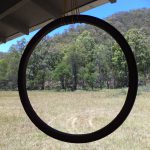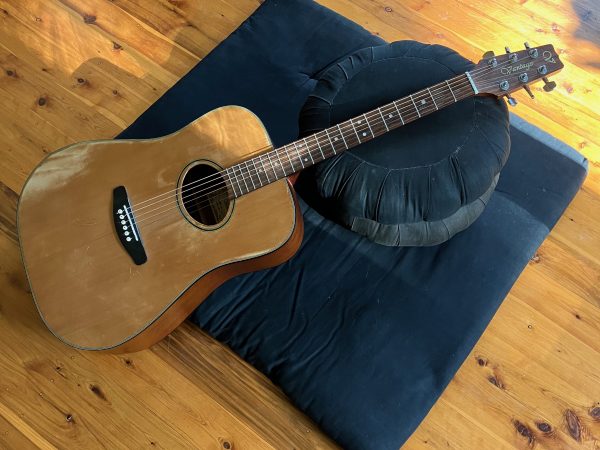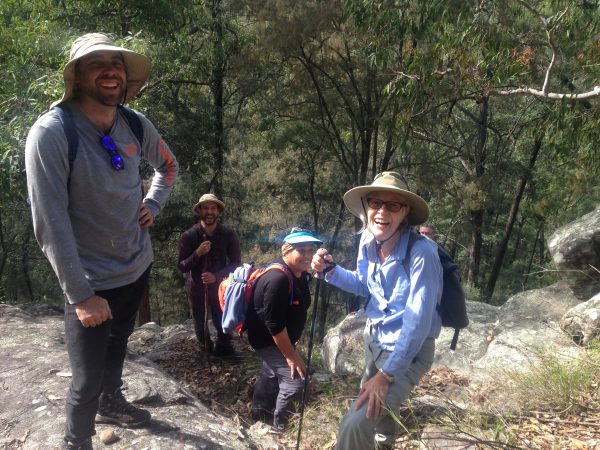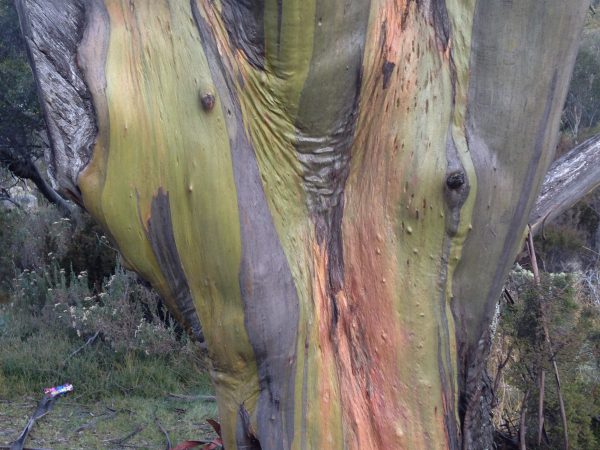Palm to Palm

The Buddha’s Way is unsurpassed, I vow to embody it fully. Indeed, the Buddha’s Way is only realised, made real, in and as this human body. Some of our sutras reference the four classic meditation postures. In the Metta Sutta: Whether standing or walking, seated or lying down – free from drowsiness, one should sustain this recollection (that is, of loving kindness). This is said to be the sublime abiding. And in the Shodōka, Walking is Zen, sitting is Zen. But wherever and however you are, the capacity to embody the Way fully is yours at any moment. Forget the self, and Buddha nature shines forth. You love and serve the world, just as you are. Your flesh and bones walk the path. Nor is great realisation limited to a particular “posture.” You might be fully enlightened as you fall flat on your face. Or make one final great push that gives birth to a baby.
Our Zen altars hold figures of buddhas and bodhisattvas who inspire us with their solid and graceful physical presences. The Buddha may be reclining. Or standing with his right hand raised and open. No fear! he proclaims. But he is most often shown sitting, deeply absorbed. Aaaah. Let him be my guide when I sit down to practice. Sometimes his hands hold the universe, the very mudra our hands adopt in zazen. Sometimes his right hand touches the ground, calling the earth to witness his liberation. Right here.
Kuan Yin may carry a vase of divine life-giving nectar. Or as Avalokitesvara may sit in the relaxed posture of royal ease, one arm draped over his raised right knee, subtly communicating that bodhisattvas can be informal too. Tara dances. Manjusri on a lion raises his powerful sword of wisdom ready to whack through delusion. Samantabhadra at Kodoji on an elephant is all set to jump off and into service.
After zazen at home in the morning I have taken to standing in front of the altar to offer some special dedications. One day I realised that Jizo was standing with me, both of us with our hands raised in gasshō. Now, together we practice standing meditation. I never want it to end. This unadorned, diminutive figure—well, diminutive next to the Buddha, whom he traditionally accompanies on a Zen altar—strikes me as highly devotional. His sweet smile shines with loving kindness toward all beings. His gasshō is a greeting for all, an honouring of all, a prayer for the wellbeing of all. His person is rooted in calm. As a bodhisattva, he stands ready to respond, ready to act, ready to protect, ready to rescue those who suffer in hell. He gathers children who have died into his arms.
Anjali is the Sanskrit word for the gasshō mudra or hand position, widely used in arts and yoga and religions across Asia as an indication of greeting, offering or veneration. It is said to represent the union of the world of beings with the world of Buddha. “Not two,” say I. When placed in front of the heart chakra—our gasshō—it communicates a warmth and sincerity from the heart.
Buddhas and bodhisattvas populate our altars. How about your heart, your heart mind? Finally these great teachers live nowhere else. Your hands in gasshō for Great Vows…that’s it! The Buddha’s Way is unsurpassed, I vow to embody it fully.
These Encouraging Words were written by Maggie Gluek, roshi for the June & July Newsletter






